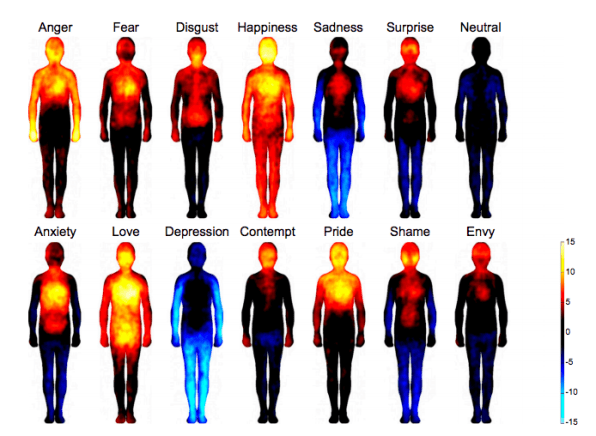Researchers from the Aalto University of Finland have developed a very interesting study on human emotions, which presents a formulation that, in a way, we already have intuitively.
Who has never had the feeling of rage stuck in their stomachs as if it were a painful ball or a fear that made your heart beat to take your breath away?
- Perhaps the most interesting thing is to know that every feeling and emotion seems to have a biological correlation: envy.
- Sadness.
- Anger.
- Love.
- Anxiety.
- Let’s see below.
Butterflies in the stomach, broken heart, cold sweat?Popular expressions that, in a way, establish an association between mental states and body sensation.
According to scientists, emotions are meant to help us cope with certain situations that occur around us, so, for example, in the face of disappointment, disappointment or loss, our brain releases a number of neurotransmitters that transmit this well-known feeling of sadness to us. ; something that will force us to seek solitude in ourselves, to think about why such a thing happened and, finally, to obtain strategies of overcoming.
The sensations, in turn, correlate with our organism, bringing together the union between body and mind, preparing us to respond properly. On the other hand, anxiety shakes our organs, accelerates our hearts, essentially prepares us for movement and the search for answers.
Attraction and even love give us a sense of physical well-being, which the brain interprets as pleasant. As is beneficial, the body is fine.
Scientists at Aaldo University in Finland have discovered that the most common sensations in humans, such as anger, sadness, happiness, fear, etc. , often trigger the strongest bodily sensations, such as those known: chest cramping, muscle stiffness and stomach cramps In addition, scientists point out that these physical correlations are universal in all cultures, even among Asians , which we call cold people when they experience certain emotions.
So one thing is very clear: we all feel the same way, but we express ourselves in different ways, that’s where each person’s personality patterns and cultural differences come into play, yet we all feel disappointment in the same organs and happiness fills us. hearts in the same way.
Studies conducted by this team of scientists are based on analyses of more than 700 people, who devoted themselves to indicating which parts of the body felt most intensely when they felt some emotion, the results showed that they all indicated the same areas and even linked them to certain colors (which can be seen in the image of this article): anger, fear , discontent, joy, sadness, surprise, neutrality, anxiety, love, depression, contempt, pride, shame and envy.
This draws a lot of attention to the fact that emotions such as happiness and love radiate throughout the body, while envy, for example, affects a very concrete and concrete part.
In any case, the emotion map shows us something we all knew for sure, although we believe that human beings are infinitely complex and indecipherable, do we all know what disappointment is and what joy is like?Positive emotions enrich us and negative emotions provoke, it hurts us and can even lead to disease. Perhaps what these studies want to show us is that regardless of gender or culture, we all share the same emotional map.
The next step is to take this map into account, learn that our actions can make others happy or unhappy, so that we can develop an understanding of the emotions of others and apply this knowledge on our emotional map.

